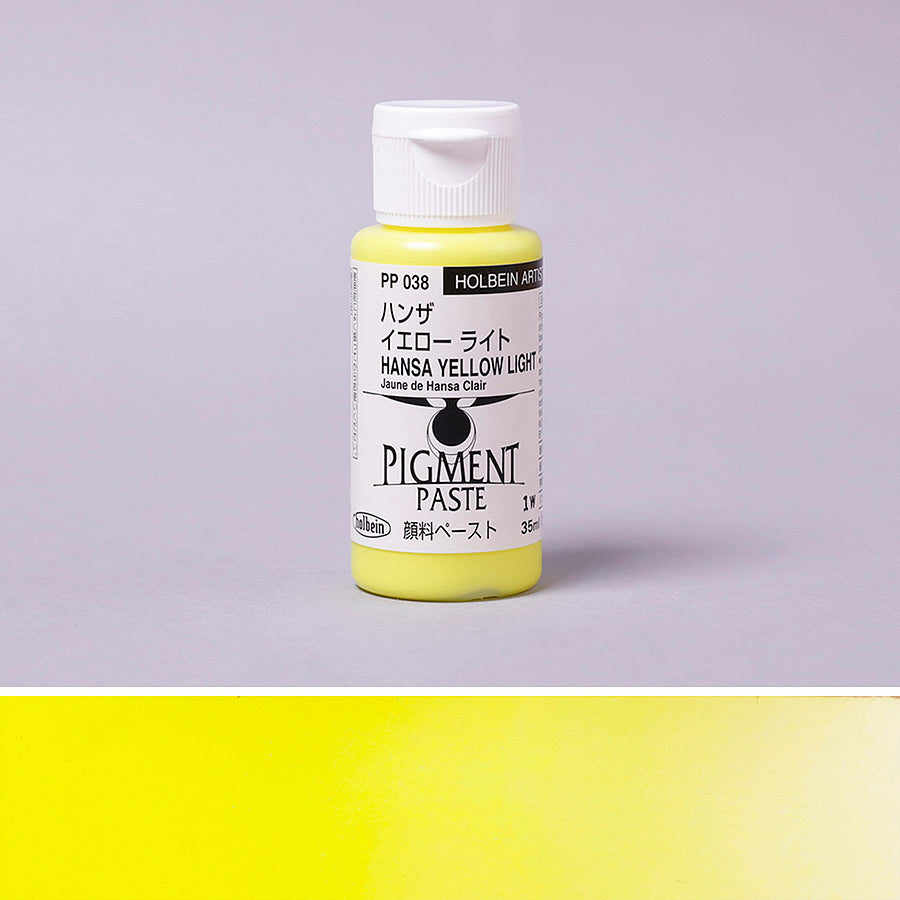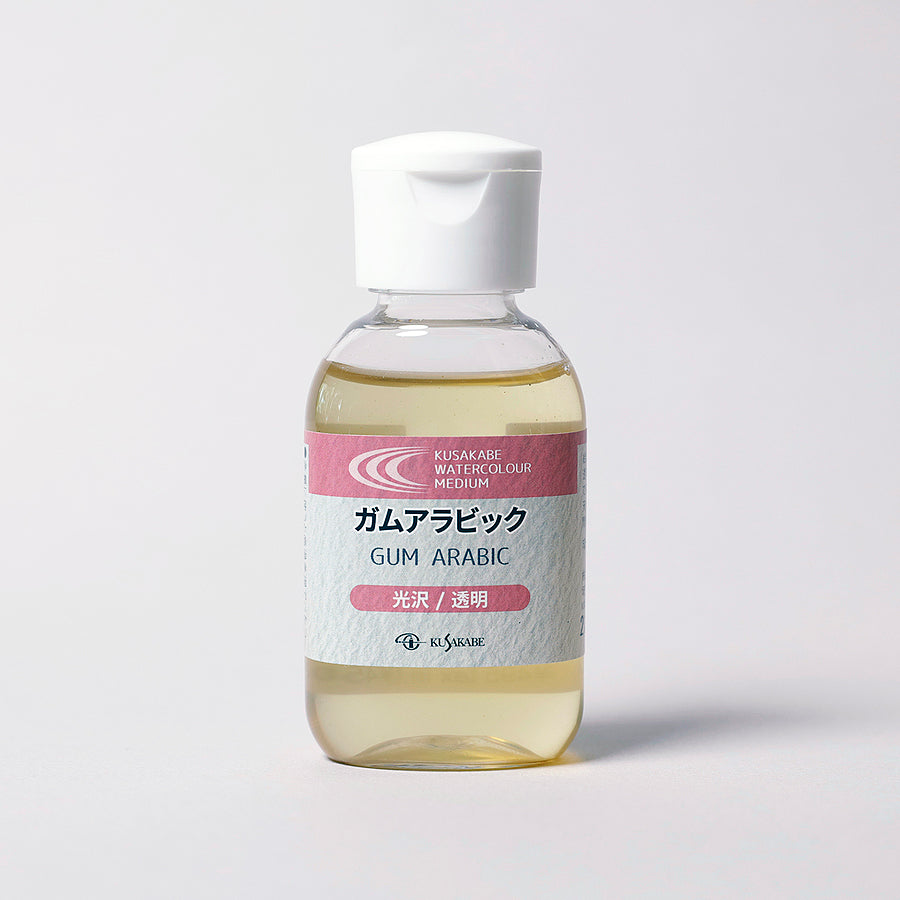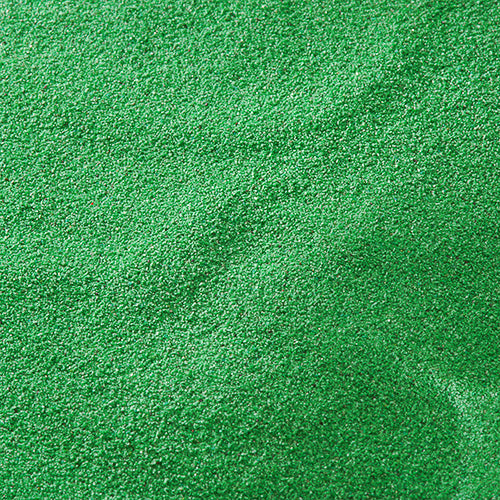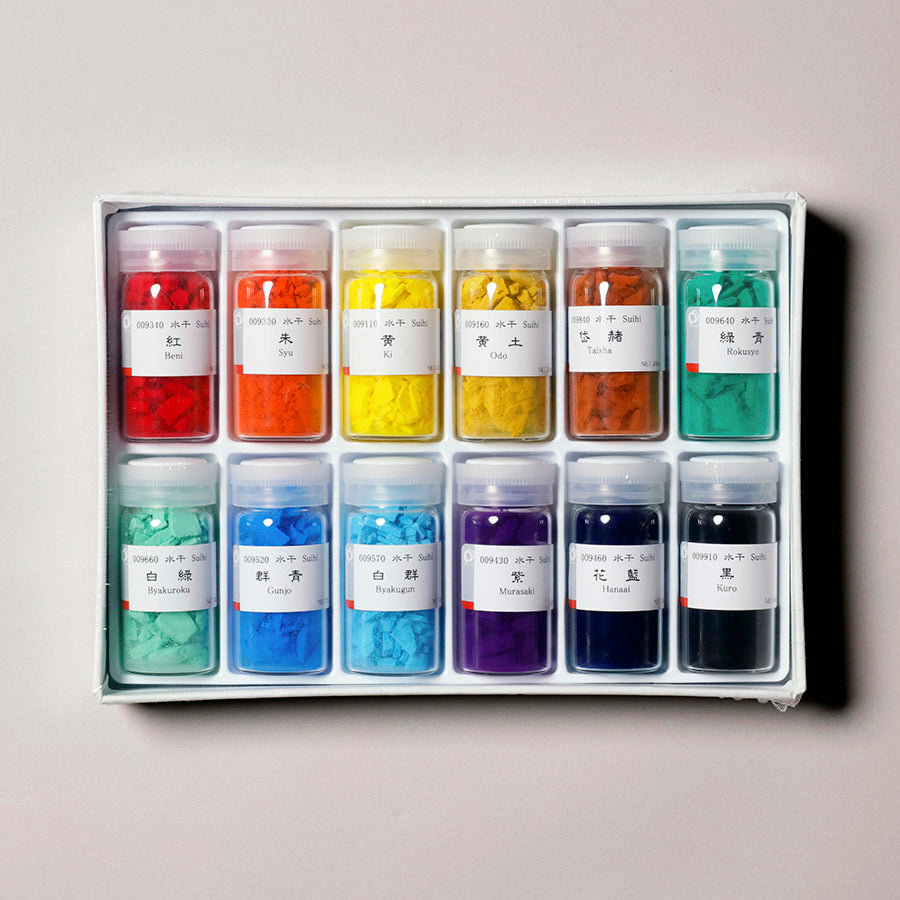Light is essential to our ability to see and perceive color. We perceive colors when objects or pigments do not fully absorb certain wavelengths of light, but instead reflect or transmit them. In other words, this process demonstrates how closely our perception of color is connected to scientific principles.
Moreover, the way paint changes after it dries and the sparkling appearance of effect pigments are all connected to chemical reactions. This article features several art materials that are perfect for elementary school students' summer research projects or for anyone looking to stimulate their intellectual curiosity. We invite you to explore PIGMENT TOKYO's art materials and develop your own independent research topics.
① Understanding How Colors Work
Colors are created by mixing three primary colors: cyan, magenta, and yellow.
The basic colors that we perceive can be presented by combining these three colors. A circular arrangement of twelve colors, based on color theory, is known as the color wheel and serves as a useful reference for color combinations.
Let's take a look at the picture below. For example, by mixing red and blue, you can create purple.

Color Wheel from Photo AC
Pairs of colors that sit opposite each other on the color wheel are called complementary colors. Because these two colors have strong and contrasting characteristics, placing them side by side creates a visually enhanced effect. This combination is often used in corporate logos and advertisements to attract attention.
Moreover, when complementary colors are mixed together, they become neutralized, often appearing as black or gray. This occurs because the colors cancel each other out when blended.
If you’d like to experiment with colors, we recommend trying the AQYLA series.
AQYLA paints are water-soluble and come in tubes that contain no lead, mercury, or cadmium. They have low formaldehyde content, making them environmentally friendly. AQYLA paints also do not harden as quickly on the surface as acrylic paints, which makes them easy to clean and ideal for children to experiment with color.
They can be applied to a variety of surfaces, such as paper, canvas, metal, and glass. Once completely dry, the paint becomes water-resistant, making it perfect for craft projects.
The following chart shows color mixing patterns based on the color wheel.
For example, mixing red and yellow produces orange, while mixing yellow and blue produces green, and so on.

“Three Primary Colors” by DESIGNER / ILLUSTRATOR, HIROTA
② Learning and Making Paints
If you have already learned about color theory in school, it’s a great idea to put it into practice by making your own paints!
Some people might feel that making paints is difficult, but paints are simply made by combining pigments and binders. For example, you can easily make them using the following painting materials.
-

Pigment Paste
Hansa Yellow LightSee the product -

Pigment Paste
Quinacridone MagentaSee the product -

Pigment Paste
Phthalo BlueSee the product
Pigment paste is a liquid colorant made by pre-kneading the pigment with water. However, since it has no adhesive properties on its own, it needs to be mixed with a binder to turn into paint.
For example, by mixing the paste with Gum Arabic Medium, it will turn into watercolor paints, while mixing it with Acrylic Emulsion produces acrylic paint.
For those who wish to learn how to make paints with PIGMENT TOKYO's art material experts, we invite you to join our Make Your Own Watercolors Workshop!
This workshop is designed for beginners and the participants get to have hands-on paint-making experience using a marble stone board and a muller, which is a traditional Western paint-making method.

【PIGEMENT ARTICLES】WORKSHOP “Make Your Own Watercolors” —Creating Original Paints—
After learning about the materials used to make paints from the instructor, participants can choose their favorite color from a selection of provided pigments and experience making their own unique paints.
③ Understanding the Origins of Colors
PIGMENT TOKYO offers nearly 4,500 pigments, more than half of which are mineral pigments. These pigments are made from ground ores and glass, creating a beautiful, grainy, and coarse texture.
In PIGMENT TOKYO, you can find raw ores displayed at the checkout countertop, which are used to produce natural iwa-enogu (mineral pigments). Among these ores, the colors Gunjo and Rokusho have the longest history. Gunjo is made from azurite, while Rokusho is made from malachite, both of which are secondary copper minerals.
If you have been to Japan, you may have noticed some green on the rusty part of the 10 yen coins. This green color resembles Rokusho, as it forms when the copper in their raw materials oxidizes due to exposure to moisture, acid or salt. In other words, you can find colors with the same composition as those used in Japanese painting in your everyday life.
Other than that, colorants can also be derived from a variety of raw materials.
For instance, Suihi pigment is created using tinted or dyed gofun, which is a white pigment made from oyster shells. Since it comes in flake form and cannot be used directly, it needs to be crushed into a powder using a mortar and pestle before application.
Earth pigments, which share a similar appearance to Suihi pigments, are natural pigments that have been used since ancient times. They can be found in murals in ancient tombs and caves that have survived through centuries. One notable example is green earth, also known as terre verte in French, which has been widely used throughout European history.
Let's explore the differences in color materials made from various raw materials and compare the results by painting with them. Other than the mentioned pigments, Japan also has a rich tradition of colors associated with the four seasons, each connected to stories and motifs relevant to that time of year. This is also a great opportunity to visit your nearby art or history museum and take note of the colors used in the masterpieces on display.
PIGMENT TOKYO "Earth Pigments"
④ Observing the Shades in Sumi Ink
While the bottled sumi ink typically used in calligraphy classes may resemble the ink used in ink wash paintings, they are fundamentally different.
Traditional sumi ink comes in the form of inksticks, which are made from animal glue and soot derived from burning plant oils and wood. However, creating ink from these sticks is a time-consuming process, as it requires rubbing the stick on an inkstone with water. In contrast, most bottled sumi inks use synthetic glue instead of animal glue and are known as bokuju (liquid ink).
Although these bottled inks offer convenience, they do not produce the same shades as traditional ink made from inksticks.

【PIGMENT ARTICLES】Rubbing Sumi Ink ~The Beauty of “Five Colors” ~
The action of using an inkstone to produce ink from an inkstick is called 磨る (suru, meaning "to polish" or "to grind"). The kanji 磨く (to polish) is used instead of 擦る (to scrub) because of the specific motion involved.
When you gently rub the inkstick on the flat surface of the inkstone, mimicking the motion of polishing a stone, you will produce beautiful ink without damaging either the stick or the stone.
The difference between bottled ink and traditional sumi ink is most noticeable when drawing on highly absorbent paper.
Therefore, at PIGMENT TOKYO, we highly recommend using the following Japanese washi paper when working with sumi ink.
This Japanese washi paper is mainly from bamboo fiber, offering excellent absorbency and a unique surface texture. It contains no anti-bleeding sizing, making it ideal for ink wash painting.
The paper allows you to achieve exquisite color variations created by soot, especially when diluted with water. This helps produce rich gradations that are often challenging to replicate with bottled sumi ink. Moreover, its decent thickness prevents bending like hanshi paper, making it easy to store.
You can also use this paper to compare the differences in ink shades between bottled ink used in calligraphy classes and traditional inksticks by creating gray tones.
If you would like to learn more about how to use an inkstick, please check out our PIGMENT ARTICLE, "Rubbing Sumi Ink ~The Beauty of ‘Five Colors’ ~".
If you don't have any ink sticks or inkstones, we recommend starting with Saiboku colored ink sticks. Saiboku ink sticks are made from pigments and animal glue, following the traditional method used to create sumi inksticks. By rubbing them on a special ceramic inkstone, you can bring traditional Japanese colors to life and use them for painting!
Please check out the following link for more information.

【PIGMENT ARTICLES】A Beauty of the Orient with SAIBOKU Watercolor
There are so many possibilities for art materials, including the coloring mechanism of effect pigments, variations in texture and unique characteristics of different binders, searching for natural colors, etc.
If you are struggling to choose a theme for your independent research, feel free to visit us in PIGMENT TOKYO and discover new inspiration!
Atsumi Okano and Nelson Hor Ee Herng
PIGMENT TOKYO Art Materials Experts







